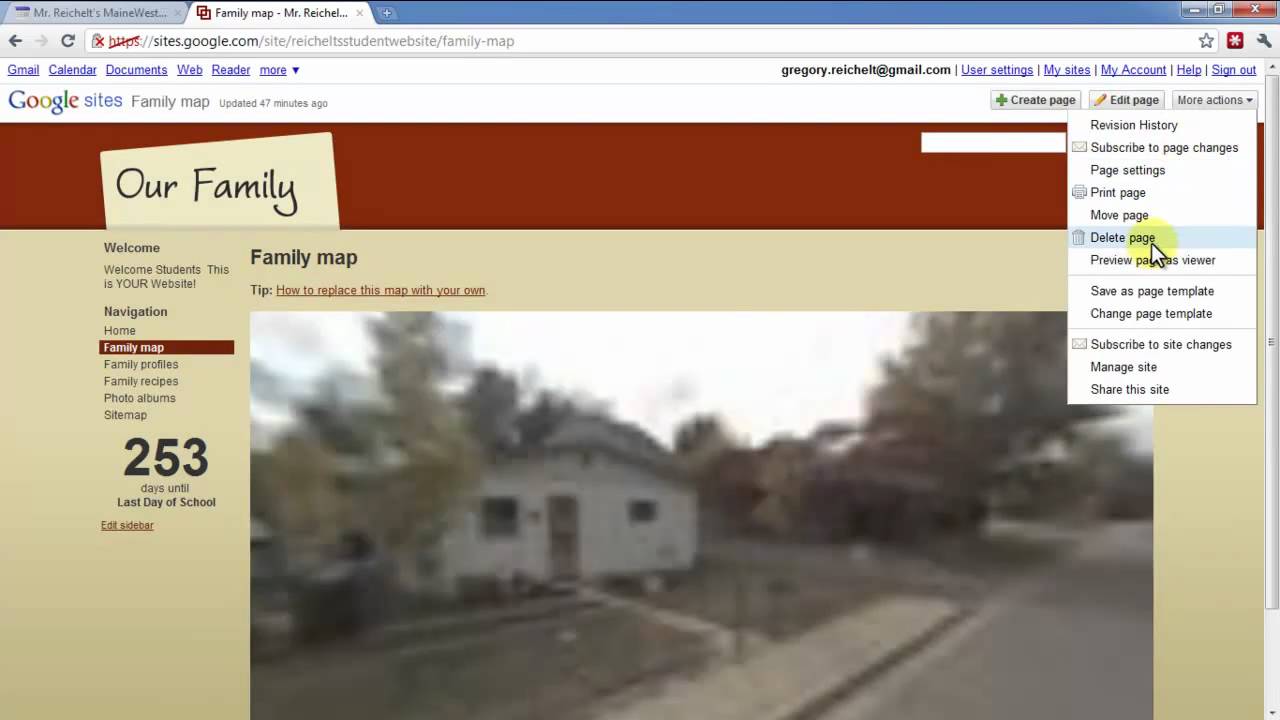
Mozilla Firefox is among the few browsers that support progressive web apps (PWAs). Chrome and Safari don't support these apps. Firefox and other browsers do. For developers, the React PWA libraries can be used to create web apps. Firefox supports PWAs. However the extension system for Firefox does not work with other browsers. For more information on creating a PWA you can consult this article.
Mozilla Firefox supports Progressive Web Apps
PWAs have seen a significant improvement in how they work. It is now much easier to set up. Chrome and Edge both provide a "+” button for installing the PWA. Sites might encourage users to use them, in the same way as a desktop program. Firefox users should know that the removal SSBs is not a sign that Firefox is dead. Mozilla is still exploring ways to support PWAs with its desktop browser. As of right now, however, it doesn't have any other plans.
There is some good news, however. Mozilla Firefox has stopped supporting PWA on the desktop. However, it does support the web application APIs that allow websites be more native-like. This app also uses a progressive enhancement strategy, which allows users to experience a similar experience. Firefox developers are working hard to improve these apps' user experience. The console tool and wiki are both available to users for them to build and test their PWAs.

Apple doesn't support them
Users become frustrated when their browsers aren't able to support new features, or prevent web content from being loaded locally. The lack of an app icon, clear branding and the fact that Safari breaks indexDB and localStorage make PWAs a bad fit for iOS. Mozilla's technical support team recently explained why they removed SSB support in a post. The company says it's evaluating alternatives.
PWAs work in all other browsers but Safari. PWAs in Safari aren't referred to using the terms install and app. A PWA can be installed by loading the site from Safari, clicking on the Share up arrow at bottom of screen, and then choosing "Add To Home Screen". This method won't give users offline functionality. Apple intends to support PWAs with its MacOS platform starting in 2020.
Progressive web apps can be developed using the React PWA Library
When it comes to creating progressive web applications, the React PWA library is hands-down the best option for Firefox. It offers many benefits such as smaller app sizes and higher conversion rates. It also supports offline mode and helps reduce network traffic. Its Google libraries address these problems. Its compatibility with Firefox is a deciding factor. You will also find a variety of useful features.
PWA design's biggest flaw is the difficulty of accessing all its capabilities. Many browsers can support PWA features. However, some may not. These features are not available on some older smartphones or browsers. Apple has jumped on the PWA bandwagon with service workers. Firefox is also the first browser to support PWAs. Firefox isn't the best browser for progressive web app development.

Mozilla Firefox doesn’t integrate with extensions
It's quite surprising to find a browser which doesn't support extensions for progressive web apps (PWAs), or even the PWA standard. Although this does not seem to be an exhaustive ban, Townsend's statement doesn't dispel the idea. It remains to be seen if Mozilla will ever integrate extensions for PWAs.
It seems that Firefox has moved on from the Site Specific Browser, which allowed users to bookmark and add websites to their home screens. Site Specific browser was vital for PWAs, as it offered basic functionality and responsiveness to all users. Progressive web apps offer sophisticated versions of pages even without a strong connection. They can be used offline as well. So, why is Firefox so slow in supporting PWAs?
FAQ
What is a "static website"?
A static site can be hosted anywhere. This includes Amazon S3, Google Cloud Storage. Windows Azure Blob storage. Rackspace Cloudfiles. Dreamhost. Media Temple. You can also deploy static sites to any platform that uses PHP, such WordPress, Drupal Joomla! Magento PrestaShop.
Static web pages can be easier to maintain as they don’t need to send requests back and forward between servers. Also, they load faster because there's no need to send any requests back and forth between servers. Because of this, static web pages are often more suitable for smaller businesses that don’t have the resources or time necessary to manage a website.
What is Website Design Software?
Software for designing websites is used by photographers, illustrators and writers.
There are two main types for website design software. Desktop apps are installed locally on the computer. You will need to install additional software. Cloud-based applications are hosted on the internet. This makes them great for mobile users.
Desktop Applications
Desktop applications may have more advanced features than cloud-based solutions but they aren’t always necessary. Some people prefer to only use a desktop program because it is easier and more convenient. Others prefer the same tool, no matter if they are using it on a mobile device or a laptop.
Cloud-Based Solutions
A cloud-based solution is a good choice for web designers who are looking to save money and time. These services allow you to edit any type of document from anywhere that has an internet connection. This allows you to use your tablet while waiting for your coffee maker to brew.
You will still need to buy a license if you choose to use a cloud-based program. You won't need to purchase additional licenses if you upgrade to a later version.
These programs are available for web page creation if you have Photoshop or InDesign, Illustrator, and other Adobe products.
How Much Does It Cost to Make An Ecommerce Site?
It all depends on what platform you have and whether or not you hire a freelancer. The average eCommerce site starts at $1,000.
Once you have chosen a platform, expect to pay between $500 and $10,000.
The average cost of a template will not exceed $5,000. This includes any customizations that you might need to suit your brand.
Can I use a framework or template on my website?
Yes! Many people use pre-built templates or frameworks when creating a website. These templates contain all the code needed to display information on your page.
Some of the most popular templates include:
WordPress - The most popular CMS
Joomla - Joomla! - another open source CMS
Drupal - An enterprise-level solution for large companies
Expression Engine is a Yahoo CMS that allows you to create custom CMS sites.
Each platform has hundreds of templates, so it should not be hard to find the one that you like.
Web development is hard?
Although web development isn't easy, there are many resources online that will help you get started.
All you have to do is find the right tools and then follow them step-by-step.
Many tutorials are available on YouTube and other platforms. You can also use free online software such as Notepad++, Sublime Text, etc.
Many books are also available in libraries or bookstores. The most widely-read books include:
"Head First HTML & CSS" by O'Reilly Media
O'Reilly Media's "Head First PHP/Mysql 5th Edition"
Packt Publishing: "PHP Programming to Absolute Beginners"
I hope this article was helpful.
Statistics
- Studies show that 77% of satisfied customers will recommend your business or service to a friend after having a positive experience. (wix.com)
- When choosing your website color scheme, a general rule is to limit yourself to three shades: one primary color (60% of the mix), one secondary color (30%), and one accent color (10%). (wix.com)
- At this point, it's important to note that just because a web trend is current, it doesn't mean it's necessarily right for you.48% of people cite design as the most important factor of a website, (websitebuilderexpert.com)
- It's estimated that chatbots could reduce this by 30%. Gone are the days when chatbots were mere gimmicks – now, they're becoming ever more essential to customer-facing services. (websitebuilderexpert.com)
- The average website user will read about 20% of the text on any given page, so it's crucial to entice them with an appropriate vibe. (websitebuilderexpert.com)
External Links
How To
What is website hosting?
Website hosting is the location where people go when they visit websites. There are two types.
-
Shared hosting is the cheapest. Your website files reside in a server managed by another company. Customers who visit your website send their requests via the Internet over to that server. The server owner then forwards the request to you.
-
Dedicated hosting - This is the most expensive option. Your website is located on only one server. No other websites share space on the server, so your traffic stays private.
Most businesses choose shared hosting because it's less expensive than dedicated hosting. Shared hosting allows you to have your website run by the company who owns the server.
However, both have their advantages and disadvantages. Here are the main differences between them:
Pros of Shared Hosting
-
Lower Cost
-
Easy To Set Up
-
Regular Updates
-
It can Be Found On Many Web Hosting Companies
Hosting shared with others can cost as low as $10/month. But keep in mind that this price usually includes bandwidth. Bandwidth is how much data you can transfer to the Internet. So even if you only upload photos to your blog, you may still pay extra money for high amounts of data transferred through your account.
Once you start, you'll quickly realize why you were paying so much for your previous host. Many shared hosts offer very little customer support. While they may occasionally assist you in setting up your site and other tasks, after that you are all on your own.
A provider with 24-hour telephone support is a good choice. They will assist you with any problems that may arise while you're sleeping.
Cons of dedicated hosting
-
More Expensive
-
Less is More
-
Requires specific skills
You're getting everything you need with dedicated hosting to operate your website. You won't have worry about whether your website is using enough bandwidth, or whether it has enough RAM (random-access memory).
This means that you'll spend a bit more upfront. Once you get started with your online business, you will find that you don't require much technical support. You'll quickly become an expert at managing your server.
So Which Is Better For My Business?
This depends on the kind of website that you want. Shared hosting is best for those who only need to sell products. It's simple to set it up and keep it updated. You'll probably receive frequent updates because you are sharing a server hosting many other sites.
However, dedicated hosting can be a great option if you're looking to build a community around the brand. You can focus on building your brand without worrying about handling your traffic.
Bluehost.com offers both. They offer unlimited monthly data transfers, 24/7 support, free domain name registration, and a 30-day money-back guarantee.